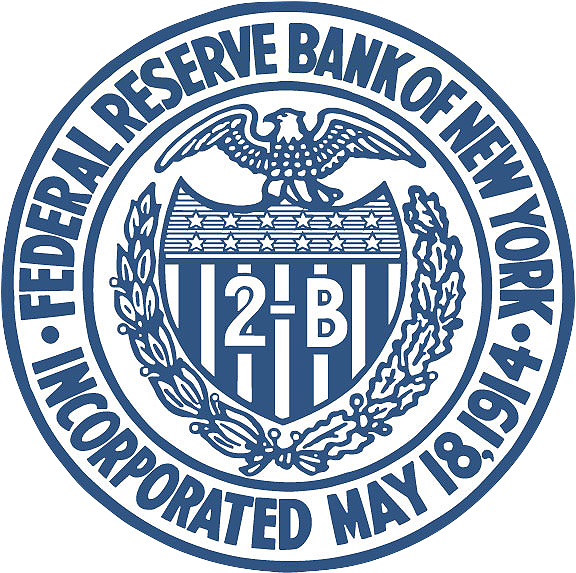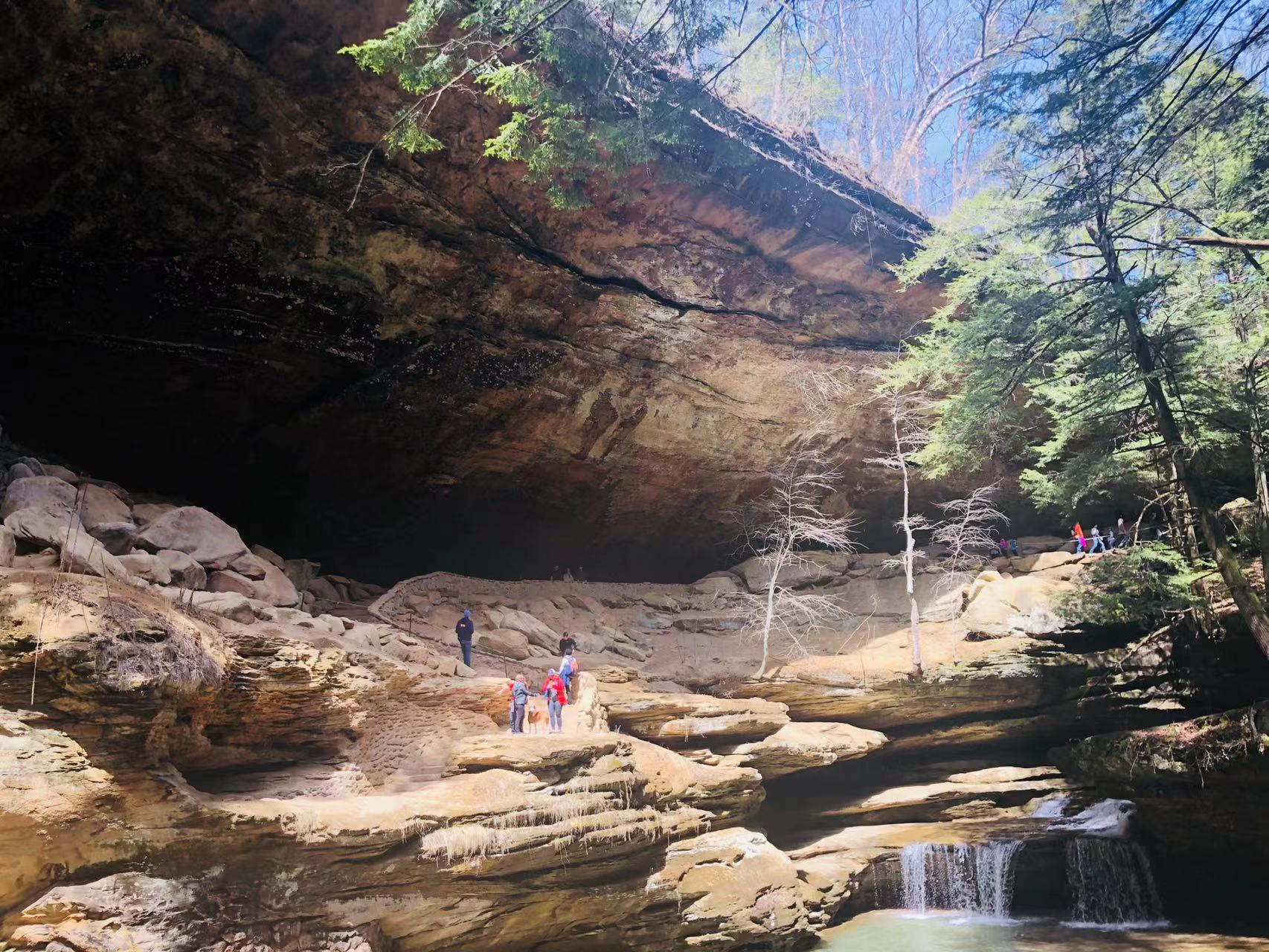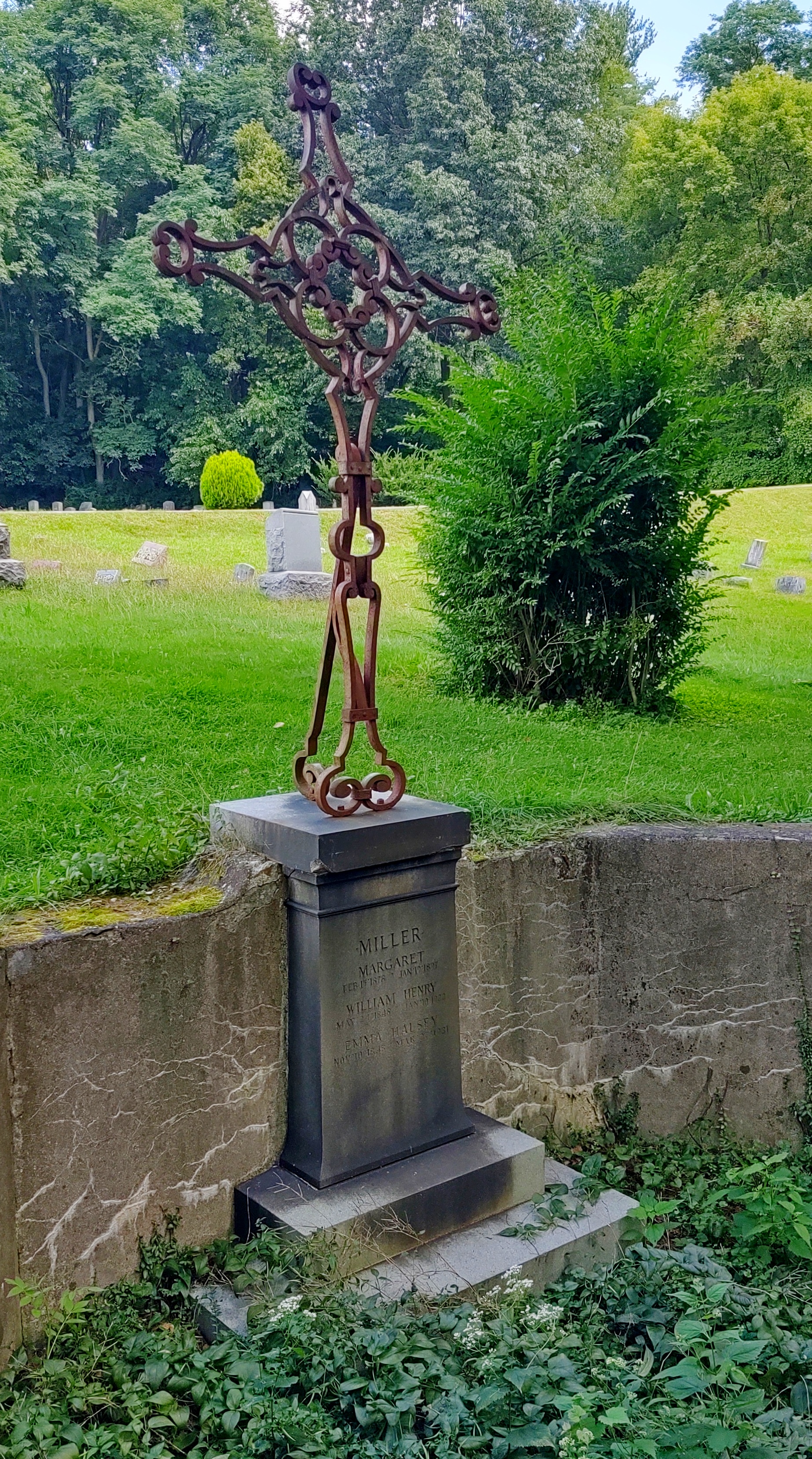|
Robert H. Treman
Robert Henry Treman (March 31, 1858 – January 4, 1937) was an American banker and financier who served as a director and deputy governor of the Federal Reserve Bank of New York. A native of upstate New York, he attended Cornell University and was a member of its board of trustees for 46 years. Treman was instrumental in the establishment of several state parks in the Finger Lakes region of New York. Lands acquired by his family were gifted to the state in the 1920s to become Enfield Glen State Park (later renamed in Treman's honor after his death), Buttermilk Falls State Park, and Taughannock Falls State Park, among others. Biography Early life and education Treman was born in Ithaca, New York on March 31, 1858, the oldest son of Elias Treman and Elizabeth Lovejoy Treman. Members of the Treman family played important roles in the history of Ithaca and the surrounding Tompkins County over five generations from the late 18th century to the late 20th century. His family owned ... [...More Info...] [...Related Items...] OR: [Wikipedia] [Google] [Baidu] |
Federal Reserve Bank Of New York
The Federal Reserve Bank of New York is one of the 12 Federal Reserve Banks of the United States. It is responsible for the Second District of the Federal Reserve System, which encompasses the State of New York, the 12 northern counties of New Jersey, Fairfield County in Connecticut, Puerto Rico, and the U.S. Virgin Islands. Located at 33 Liberty Street in Lower Manhattan, it is by far the largest (by assets), the most active (by volume), and the most influential of the Reserve Banks. The Federal Reserve Bank of New York is solely responsible for implementing monetary policy on behalf of the Federal Open Market Committee and acts as the market agent of the entire Federal Reserve System (as it houses the Open Market Trading Desk and manages System Open Market Account). It is also the sole fiscal agent of the U.S. Department of the Treasury, the bearer of the Treasury's General Account, and the custodian of the world's largest gold storage reserve. Aside from these distinct f ... [...More Info...] [...Related Items...] OR: [Wikipedia] [Google] [Baidu] |
Tuberculosis
Tuberculosis (TB) is an infectious disease usually caused by '' Mycobacterium tuberculosis'' (MTB) bacteria. Tuberculosis generally affects the lungs, but it can also affect other parts of the body. Most infections show no symptoms, in which case it is known as latent tuberculosis. Around 10% of latent infections progress to active disease which, if left untreated, kill about half of those affected. Typical symptoms of active TB are chronic cough with blood-containing mucus, fever, night sweats, and weight loss. It was historically referred to as consumption due to the weight loss associated with the disease. Infection of other organs can cause a wide range of symptoms. Tuberculosis is spread from one person to the next through the air when people who have active TB in their lungs cough, spit, speak, or sneeze. People with Latent TB do not spread the disease. Active infection occurs more often in people with HIV/AIDS and in those who smoke. Diagnosis of active TB is ... [...More Info...] [...Related Items...] OR: [Wikipedia] [Google] [Baidu] |
Enfield Falls Mill And Miller's House
Enfield Falls Mill and Miller's House, also known as Treman House and Mill, is a historic grist mill and former millowner's residence located at Robert H. Treman State Park near Ithaca in Tompkins County, New York. The mill is a -story frame structure over a stone foundation. It is a turbine-powered mill constructed in 1839. The mill has three runs of stones: one for griding buckwheat, one for grinding wheat, and a third for grinding coarser grain. The mill ceased operation in 1917. The millowner's house is a simple but elegant vernacular Greek Revival–style dwelling. The house consists of a -story main section, with a slightly lower L-shaped wing. It serves as home for the park superintendent.''See also:'' It was listed on the National Register of Historic Places The National Register of Historic Places (NRHP) is the United States federal government's official list of districts, sites, buildings, structures and objects deemed worthy of preservation for their histor ... [...More Info...] [...Related Items...] OR: [Wikipedia] [Google] [Baidu] |
Gorge
A canyon (from ; archaic British English spelling: ''cañon''), or gorge, is a deep cleft between escarpments or cliffs resulting from weathering and the erosion, erosive activity of a river over geologic time scales. Rivers have a natural tendency to cut through underlying surfaces, eventually wearing away rock layers as sediments are removed downstream. A river bed will gradually reach a baseline elevation, which is the same elevation as the body of water into which the river drains. The processes of weathering and erosion will form canyons when the river's River source, headwaters and estuary are at significantly different elevations, particularly through regions where softer rock layers are intermingled with harder layers more resistant to weathering. A canyon may also refer to a rift between two mountain peaks, such as those in ranges including the Rocky Mountains, the Alps, the Himalayas or the Andes. Usually, a river or stream carves out such splits between mountains. Examp ... [...More Info...] [...Related Items...] OR: [Wikipedia] [Google] [Baidu] |
State Park
State parks are parks or other protected areas managed at the sub-national level within those nations which use "state" as a political subdivision. State parks are typically established by a state to preserve a location on account of its natural beauty, historic interest, or recreational potential. There are state parks under the administration of the government of each U.S. state, some of the political divisions of Mexico#States, Mexican states, and in Brazil. The term is also used in the Australian states of template:state parks of Victoria, Victoria and state parks of New South Wales, New South Wales. The equivalent term used in Canada, Argentina, South Africa, and Belgium, is provincial park. Similar systems of local government maintained parks exist in other countries, but the terminology varies. State parks are thus similar to national parks, but under state rather than federal administration. Similarly, local government entities below state level may maintain parks, e.g., r ... [...More Info...] [...Related Items...] OR: [Wikipedia] [Google] [Baidu] |
Treman State Park
Robert H. Treman State Park is a state park located in Tompkins County, in the Finger Lakes region of New York in the United States. The park is situated in the towns of Ithaca, Enfield and Newfield. History Robert H. Treman first purchased land surrounding Enfield Falls in 1915, and worked to improve the property by planting over 1,000 trees. He and his wife, Laura Treman (Hosie), donated the land to New York State in 1920 for the establishment of Enfield Glen State Park. The park was renamed in Robert H. Treman's honor following his death in 1937. The Enfield Falls Mill and Miller's House was listed on the National Register of Historic Places in 1979. Geology The rock formations within the park are primarily made of Devonian shale and sandstone. These rocks formed in horizontal layers, creating flat slabs and angular edges as they erode and fracture. The valley and waterfalls formed since the last ice age — within the last twenty or thirty thousands years — roughly ... [...More Info...] [...Related Items...] OR: [Wikipedia] [Google] [Baidu] |
Cornell Southeast Asia Program
The Southeast Asia Program (SEAP) was founded in 1950 to promote the acquisition and dissemination of knowledge about countries, cultures and languages of the region. It is an interdisciplinary program of Cornell University that focuses on the development of graduate training and research opportunities on the languages and cultures of Brunei, Burma, Cambodia, Indonesia, Laos, Malaysia, the Philippines, Singapore, Thailand, and Vietnam. Cornell is known for being the "Mecca of Southeast Asian Studies." Overview Since 1958, the U.S. Department of Education has continuously recognized SEAP as a Title VI National Resource Center. As such, it trains experts on the region and strives to meet strategic national needs in government, business, science and professional fields, as well as provides K-16 Outreach. SEAP offers instruction at four levels of study in Burmese, Indonesian, Khmer, Tagalog, Thai, and Vietnamese. As an interdisciplinary program, SEAP coordinates resources and f ... [...More Info...] [...Related Items...] OR: [Wikipedia] [Google] [Baidu] |
William Henry Miller (architect)
William Henry Miller (1848–1922) was an American architect based in Ithaca, New York. Biography Born in 1848 in Trenton, New York, Miller attended Cornell University from 1868 to 1870, but departed without graduating one year before the College of Architecture was created. Cornell refers to Miller as "Cornell’s first student of architecture," and his portrait hangs in the Uris Library lobby, which he designed. Miller married Emma Halsey of Ithaca in 1876. He is buried at Lake View Cemetery in Ithaca, New York under a distinctive wrought-iron cross of his design and across from the Cornell family mausoleum he designed for his longtime benefactors, the Cornell family. Works He was the foremost architect in Ithaca and for Cornell for many years, designing over seventy buildings on and off campus including 9 fraternity houses. Among his buildings for Cornell were the President's House, Barnes Hall, University Library, Boardman Hall, infirmaries, and Prudence Risley Hall. In 18 ... [...More Info...] [...Related Items...] OR: [Wikipedia] [Google] [Baidu] |
Cayuga Lake
Cayuga Lake (,,) is the longest of central New York's glacial Finger Lakes, and is the second largest in surface area (marginally smaller than Seneca Lake) and second largest in volume. It is just under long. Its average width is , and it is at its widest point, near Aurora. It is approximately at its deepest point, and has over of shoreline. The lake is named after the indigenous Cayuga people. Location The city of Ithaca, site of Ithaca College and Cornell University, is located at the southern end of Cayuga Lake. Villages and settlements along the east shore of Cayuga Lake include Myers, King Ferry, Aurora, Levanna, Union Springs, and Cayuga. Settlements along the west shore of the lake include Sheldrake, Poplar Beach, and Canoga. The lake has two small islands. One is near Union Springs, called Frontenac Island (northeast); this island is not inhabited. The other island, Canoga Island (northwest), is located near the town of Canoga. This island has several cam ... [...More Info...] [...Related Items...] OR: [Wikipedia] [Google] [Baidu] |
Bryant Fleming
Bryant Fleming (July 19, 1877 – September 19, 1946) was an American architect and landscape architect. Early life Fleming was born on July 19, 1877 in Buffalo, New York. He graduated from Cornell University in 1901, where he studied horticulture, architecture, architectural history, and art. Career Fleming became the first lecturer and instructor in landscape art in the Department of Landscape Art in the College of Agriculture at Cornell University in 1904, the third such program in the United States after Harvard (1900) and the University of Massachusetts (1902). He served as head of the department from 1906 to 1915 and in 1925 was appointed as University Landscape Advisor to Cornell.Bryant Fleming , The Cultural Landscape Foundation Fleming established a private practice n ... [...More Info...] [...Related Items...] OR: [Wikipedia] [Google] [Baidu] |
Warren H
A warren is a network of wild rodent or lagomorph, typically rabbit burrows. Domestic warrens are artificial, enclosed establishment of animal husbandry dedicated to the raising of rabbits for meat and fur. The term evolved from the medieval Anglo-Norman concept of free warren, which had been, essentially, the equivalent of a hunting license for a given woodland. Architecture of the domestic warren The cunicularia of the monasteries may have more closely resembled hutches or pens, than the open enclosures with specialized structures which the domestic warren eventually became. Such an enclosure or ''close'' was called a ''cony-garth'', or sometimes ''conegar'', ''coneygree'' or "bury" (from "burrow"). Moat and pale To keep the rabbits from escaping, domestic warrens were usually provided with a fairly substantive moat, or ditch filled with water. Rabbits generally do not swim and avoid water. A ''pale'', or fence, was provided to exclude predators. Pillow mounds The most ... [...More Info...] [...Related Items...] OR: [Wikipedia] [Google] [Baidu] |







